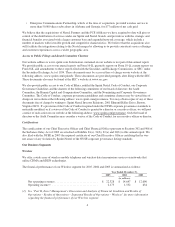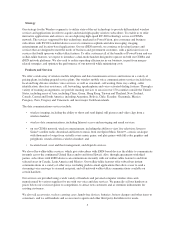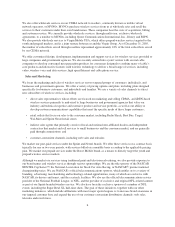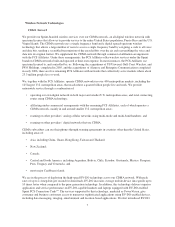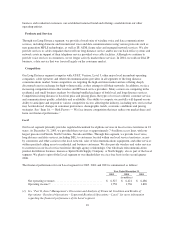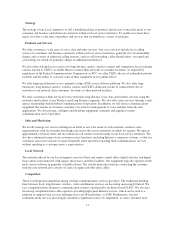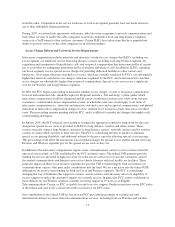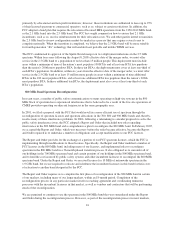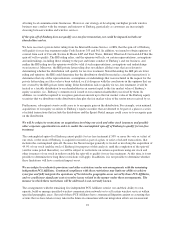Sprint - Nextel 2005 Annual Report Download - page 23
Download and view the complete annual report
Please find page 23 of the 2005 Sprint - Nextel annual report below. You can navigate through the pages in the report by either clicking on the pages listed below, or by using the keyword search tool below to find specific information within the annual report.chosen to forgo use of traditional wireline phone service and instead rely solely on wireless services. We expect
competition to intensify as a result of the entrance of new competitors and the rapid deployment of new
technologies, products and services. See “Item 1A. — Risk Factors — We face intense competition that may
reduce our market share and harm our financial performance.”
Legislative and Regulatory Developments
Overview
Communications services are regulated both at the federal level by the FCC and at the state level by public
utilities commissions, or PUCs. In general, incumbent local exchange carriers, or ILECs, such as Embarq, are
subject to the most extensive regulation. Regulation covers not only rates and service terms, but also the terms on
which ILECs provide connections and network elements to CLECs. Long distance providers, such as us with
respect to our Long Distance segment, are subject to less regulation, but still must comply with various statutory
requirements and regulations. The Communications Act of 1934, or Communications Act, preempts states from
regulating the rates of commercial mobile radio service, or CMRS, providers, such as us with respect to our
Wireless segment, but CMRS providers are subject to various licensing and technical requirements imposed by
the FCC, including provisions related to the acquisition, assignment or transfer of radio licenses. The FCC also
imposes mandates on CMRS providers, such as those that require CMRS providers to transmit the telephone
number and certain location information of someone calling 911 to the appropriate 911 dispatch center, and to
allow customers to retain existing telephone numbers when switching from one communications carrier to
another. Although the Communications Act preempts state regulation of CMRS rates and entry of CMRS
providers, CMRS providers are subject to state authority over terms and conditions of service, such as certain
billing practices and other consumer-related matters.
The following summary of the regulatory environment in which our business operates does not describe all
present and proposed federal, state and local legislation and regulations affecting the communications industry.
Some legislation and regulations are currently the subject of judicial proceedings, legislative hearings and
administrative proceedings that could change the manner in which our industry operates. We cannot predict the
outcome of any of these matters or their potential impact on our business. See “Item 1A. Risk Factors –
Government regulation could adversely affect our prospects and results of operations; the FCC and state
regulatory commissions may adopt new regulations or take other actions that could adversely affect our business
prospects or results of operations.” Regulation in the communications industry is subject to rapid changes, any of
which could have an adverse effect on us in the future. The following discussion describes some of the major
communications-related regulations that affect us, but numerous other substantive areas of regulation not
discussed here may also influence our business.
Wireline Operations
Competitive Local Service
The Telecommunications Act of 1996, or Telecom Act, the first comprehensive update of the Communications
Act, was designed to promote competition, and it eliminated legal and regulatory barriers to entry into local and
long distance communications markets. It also required ILECs to allow resale of specified local services at
wholesale rates, negotiate interconnection agreements, provide nondiscriminatory access to unbundled network
elements, or UNEs, and allow co-location of interconnection equipment by competitors. The rules implementing
the Telecom Act remain subject to legal challenges. Thus, the scope of future local competition remains
uncertain. These local competition rules impact us because we provide communications services as an ILEC to
approximately 4% of the access lines in the United States, which represents the substantial part of the operations
of our Local segment.
In March 2005, the FCC implemented an order that terminated the obligation of ILECs to offer a platform of
UNEs to CLECs after a one-year transition period. The order, which has been challenged, has led our Long
Distance segment to discontinue its use of the unbundled element platforms. ILECs generally have benefited
12




